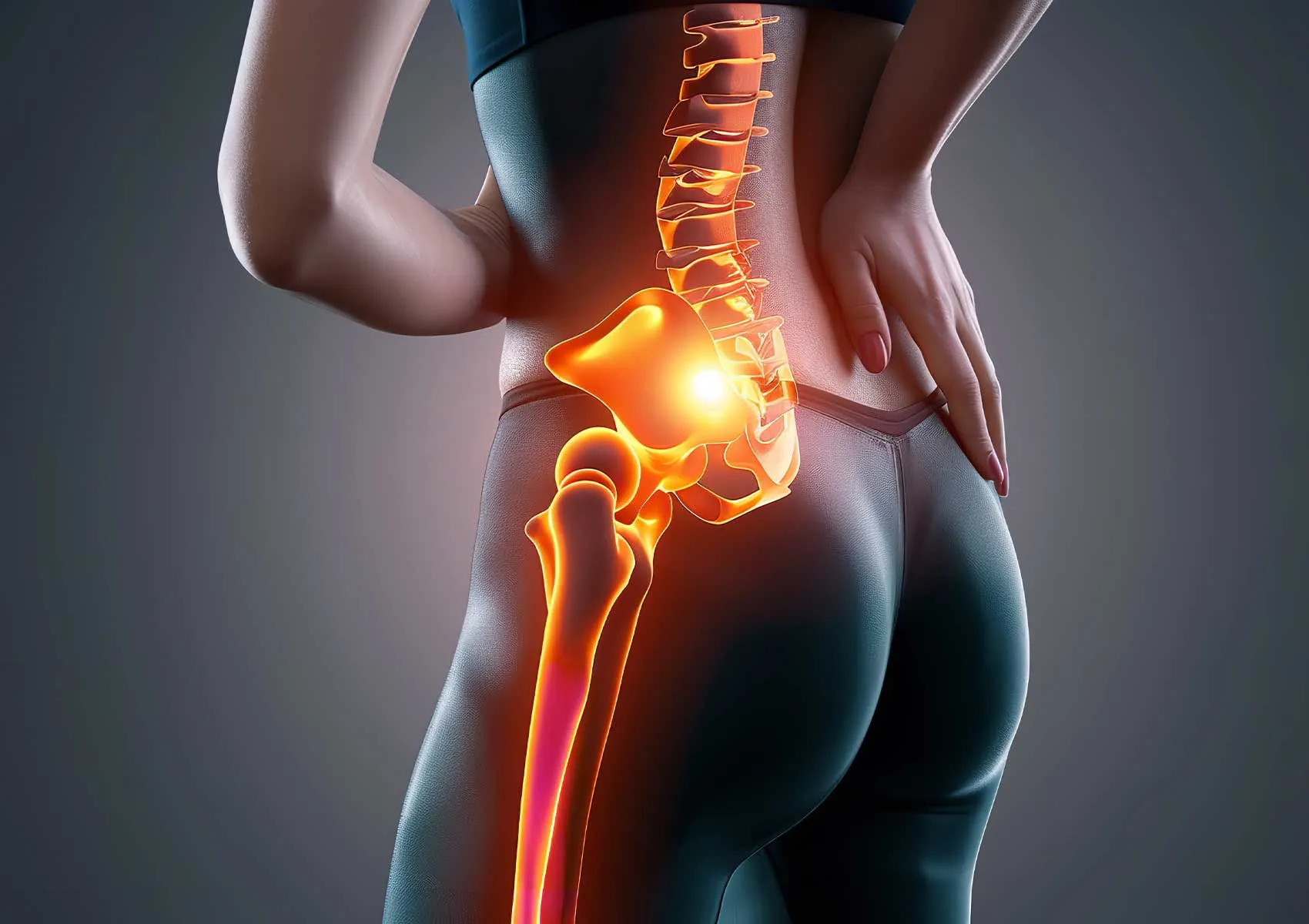Anatomy of the Hip Joint: What Does a Healthy Hip Look Like?
The Center of Movement, the Foundation of Balance
The hip joint is one of the body’s largest and most powerful joints. It plays a central role in nearly all daily movements—walking, sitting, running, climbing stairs, and maintaining balance. As a weight-bearing joint, the hip must provide both mobility and stability. Its structure allows for a wide range of motion while withstanding significant mechanical loads. But maintaining this balance requires proper anatomical alignment, muscular support, and joint function.
In this article, we explore the anatomy of the hip joint, its key components and functions, what defines a healthy hip, and the common conditions that can disrupt this essential structure.
What Are the Components of the Hip Joint?
The hip is a ball-and-socket joint, designed for a large range of motion and stability. It consists of the following key structures:
- Femoral head – the rounded top of the thigh bone (femur)
- Acetabulum – the socket in the pelvic bone that houses the femoral head
- Joint capsule and ligaments – provide support and limit excessive motion
- Labrum – a fibrocartilaginous ring around the acetabulum that enhances stability
- Articular cartilage – smooth tissue that cushions the joint surfaces and reduces friction
- Synovial fluid – lubricates the joint and nourishes the cartilage
- Surrounding muscles – including the gluteal group, iliopsoas, and pelvic stabilizers
Each of these structures must function in harmony to maintain a healthy, pain-free hip.
Characteristics of a Healthy Hip
A healthy hip joint should meet the following criteria:
- Proper congruency between the femoral head and acetabulum
- An intact, well-functioning labrum that provides a seal around the joint
- Smooth, undamaged cartilage surfaces
- Balanced and strong musculature surrounding the joint
- Full and pain-free range of motion, including flexion, extension, abduction, and rotation
- Stable and aligned joint axes
- No pain during movement or daily activities
When these elements are intact, the hip can efficiently handle loads and provide smooth, pain-free motion throughout the day.
What Disrupts Normal Hip Function?
Several structural and biomechanical factors can negatively impact hip function. Some are congenital, while others develop over time due to trauma, overuse, or degeneration:
- Hip dysplasia – a shallow acetabulum that offers poor coverage of the femoral head
- Femoroacetabular impingement (FAI) – abnormal contact between the femoral head and acetabulum
- Labral tears – disrupt joint stability and cause mechanical symptoms like clicking
- Cartilage damage – may progress to osteoarthritis
- Muscle imbalance or weakness – affects alignment and load distribution
- Post-traumatic deformities or joint infections
These conditions can lead to chronic pain, limited range of motion, limping, and, over time, the need for surgical intervention like hip arthroscopy or joint replacement.
How to Maintain Hip Health
- Strengthen surrounding muscles, especially the gluteals and pelvic stabilizers
- Maintain flexibility through regular stretching or yoga
- Avoid excessive weight gain, which increases joint stress
- Use proper technique in sports and exercise to reduce strain on the joint
- Don’t ignore early signs of pain, stiffness, or instability
- Seek early diagnosis and treatment for issues like FAI, labral tears, or dysplasia
An effective approach to hip health is often multidisciplinary, combining orthopedics, physical therapy, and sports medicine when needed.
FAQ
-
Which bones form the hip joint?
The hip joint is formed by the femur (thigh bone) and the pelvis—specifically, the acetabulum.
-
What is the role of the labrum in the hip?
The labrum enhances joint stability by deepening the socket and creating a seal around the femoral head.
-
Which muscles are important for hip stability?
The gluteus medius, gluteus maximus, iliopsoas, and core muscles are key for hip strength and control.
-
How can I improve or maintain hip flexibility?
Regular stretching, yoga, and mobility exercises are essential for preserving range of motion.
-
Is hip pain ever considered normal?
No. Persistent or activity-related hip pain should be evaluated—especially if it limits mobility or causes limping.

